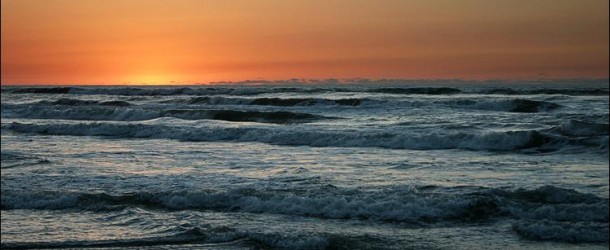The Caspian also receives substantial discharges of pollutants from its many coastal communities and the extensive oil drilling and refining operations, especially in Azerbaijan and Turkmenistan. Oil pollution is likely to become a more serious problem as large investments are made to further develop the region’s immense petroleum reserves, including the area off the coast of Kazakhstan. Rising water levels (discussed below) pose additional contamination threats as they inundate oil wells and toxic dumps that were located on previously dry land. The flooding also contaminates surface and ground waters to levels that exceed acceptable levels by manifold.
Because the Caspian lacks an outlet, pollutants accumulate over time, threatening its marine life (including its fish stocks) and other wildlife (such as migratory birds that congregate in the Volga delta), endangering human health, and diminishing the region’s potential for tourism. Pollution is only one of several factors that has contributed to the decline of fisheries of the Caspian Sea, which has been a major economic blow to some coastal communities and districts.
The decline in fisheries has been most notable in the decline in sturgeon stock. Although not much reliable stock, reproduction and catch data are available, there is a general consensus that the sturgeon is on the verge of extinction if no immediate and effective measures are taken. The catch which was reported to be around 49 thousand tons at the turn of the 20th century in Volga is now reported to be less than one thousand. On the Iranian side where the catch data are more reliable and more indicative of the stock, the catch has fallen by two thirds in a decade. The decline in fish stock is also reported to be consederable in Kilka. A 30% reduction is reported in the sourthern part while reports indicate noticeable reduction in the north. Other fish stock also show decline. Many reasons are cited and disputed for the decline. Dam construction on Volga which damaged the spawning capacity, river pollution and poaching are listed as major contributing factors, but the root causes are basically the lack of environmental consideratin amongst politicians and planners, lack of an agreed regional fisheries plan as well poverty in the coastal communities. It should be borne in mind that that fisheries directly and indirectly provide jobs and income to many of the 12 milllion residing around the Caspian.
Biodiversity erosion is a threat in the bio rich Caspian. The sea and its immediate surrounding coastal area can boast of being a unique ecological world heritage. The sea is home to some 150 species of fish including some rare sturgeon species and the frash water seal. The coastal and the river estuaries provide breeding and spawning habitats not only for rare fish, but also for migratory birds such as black crane which travel from Siberia to Africa. The forests in the southern part are the last remaining of their kind across the globe.
The Caspian fishing industry has collapsed as stocks of fish, such as sturgeon, perch, herring and pike, have sharply declined, which is also attributable to unsustainable harvesting and disruption of ecosystems. The catch of these four species declined from 400,000 metric tons in 1950 to only 10,000 tons in 1990. Especially threatened is the Caspian’s best-known marine resource, the sturgeon, whose roe was once used to produce 90 percent of the world’s caviar.
The rising water levels of the Caspian now appear to be the most serious environmental threat in the region. The level of the sea dropped by approximately three meters from 1929 to 1977, ostensibly due to reductions in the flow of tributary rivers, especially from the Volga, where large amounts of water were diverted for irrigation and entrapments for hydroelectric projects. Water levels then surprisingly began rising and by 1994 were 2.5 meters higher than in 1977 before stabilizing in recent years.
The decline in the environmental quality is serious. While the overall industrial pollution is not as critically high as some environmentalists would have feared it to be, the sea is far from being pristine. Due mostly to the decline in industrial production in the CIS countries, the inflow of industrial contaminants has falenn in the northern part. A rise in production, which is politically desirable, will certainly put additional pressure on the Sea. Dam construction in Volga and Kura have also helped to sediment a considerable quantity of contaminants in reservoirs behind dams, thus helping to prevent outflow of contaminant into the sea This however has not prevented inflow of certain contaminants, nor has it been of any use for industries that are built downstream of dams. The Caspian sea has a number of “hotspots” which are areas of concentrated industrial pollution Although data and information on contamination and pollution is scant and not easily accessible, it could nevertheless be suggested that the areas around Bay of baku, the estuaries of Volga, Terek and the inundated oil fields of Kazakhstan are amongs these hotspots.
The cause of this rise remains a mystery, even though scientists have considered a variety of possible but inconclusive explanations – both natural and anthropogenic. Among these are long-term naturally occurring hydrological cycles, tectonic-plate movements; the building of containment structures-in particular a dike across the Kara-Bogaz-Gol (a semi-enclosed bay on the east side of the Caspian); increased rainfall triggered by human-induced global warming, and oil pollution that may be retarding evaporation.
Land degradation is a fourth environmental problem in the Caspian region as large tracts of the once fertile steppes of the region are reverting to desert. The situation is especially acute in the Kalmykia area west of the Caspian, where the sandy soils were once held in place by native grasses.
In what ways do these environmental problems pose a security threat? Are they likely to be the primary cause, or a contributing factor, to violent conflict in the region, and thus to jeopardize environmental security in the traditional sense? If not, are they having a significant and direct adverse effect on the basic welfare of the people of the region, and thus are appropriately viewed as threats to human security, as defined in the more comprehensive manner? While the Soviet state’s aggressive efforts to exploit natural resources underlie most of the severe environmental problems that continue to afflict the area, the communist regime was rather successful in suppressing violence among the groups in the region. Sharp disputes have arisen between Russia and the newly independent states over rights to exploit the immense oil and gas reserves of the area and the routes that would be used to transport oil to markets outside the region. Russia has repeatedly contested the plans of the neighboring Caspian states to develop oil resources, especially where Western companies are involved through joint ventures. It has reserved the right to intervene and demand participation in such projects, which it has described as “illegal seizures” of national resources.
Yegana BAKHSHIYEVA
Junior Researcher – ANAS Caucasus Studies Institute Caucasus Policy Department
























































